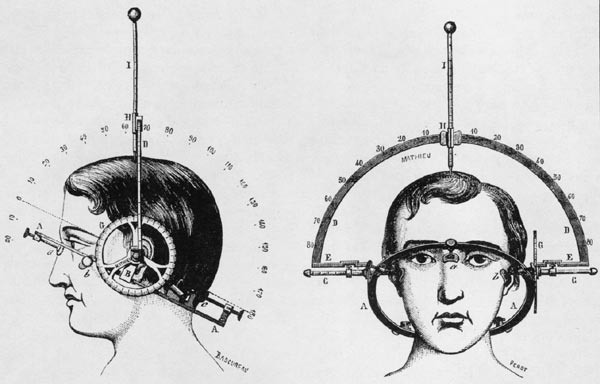
This Article From Issue
September-October 1998
Volume 86, Number 5
DOI: 10.1511/1998.37.0
Instruments of Science: An Historical Encyclopedia. Robert Bud and Deborah Jean Warner, eds. xxv + 709 pp. The Science Museum, London, The National Museum of American History, Smithsonian Institution, Garland Publishing, 1998. $138.
This encyclopedia's overriding statement is that an instrument connects science with reality. And to the extent that science spawns technology by demanding finer measurements or experiments, the relationship between science and technology that emerges here is symbiotic.

From Instruments of Science: An Historical Encyclopedia.
The 327 instruments chosen for inclusion are "scientific" in the broadest sense; they serve not only for "doing" science but for applying science to the gamut of industry. The tintometer, for example (under the entry "Lovibond Comparator"), was created in the 1870s to grade beer color but, in fact, gave rise to a system of several million colors that constituted a standard in a variety of industries until almost a hundred years later.
One is quickly drawn to reading this volume one entry after another. The reader comes away with a sense of how science is done; groundbreaking discoveries are rarely easy. In recent times, for example, the gene sequencing of Sanger (Cambridge) and Maxam and Gilbert (Harvard) was hard, one learns, and could not have led to the outburst of genetic knowledge occasioned by the later-developed automated instruments. The articles are very much up to date, many of the stories unfinished. With respect to the glucose sensor, for example, "there is not yet a long-lived, reliable, stable, and easily calibrated device suitable for implantation or even extended bedside applications."
The contributors span academia, government and industry. They also span the Atlantic Ocean. Many are experts in their fields, and their fields are a refreshing range of disciplines.They have been given free rein to explore sociological, linguistic and even political tangents.
Editors Bud and Warner are revealed as true curators. They are associated, respectively, with the Science Museum, London and the National Museum of American History of the Smithsonian Institution, Washington, which two institutions collaborate in publication of the volume. They afford the reader an opportunity to meander the corridors of science and to come away with the very broad cultural insights.
Unlike other volumes which merely catalogue instruments, this encyclopedia is an explicitly and intentionally thoughtful history of instruments. Thus, it is not only a compendium of resources but pleasurable and thought-provoking to read. Scientists are particularly apt to find pleasure in this book.—Samuel J. Petuchowski, Bromberg & Sunstein LLP, Boston
American Scientist Comments and Discussion
To discuss our articles or comment on them, please share them and tag American Scientist on social media platforms. Here are links to our profiles on Twitter, Facebook, and LinkedIn.
If we re-share your post, we will moderate comments/discussion following our comments policy.